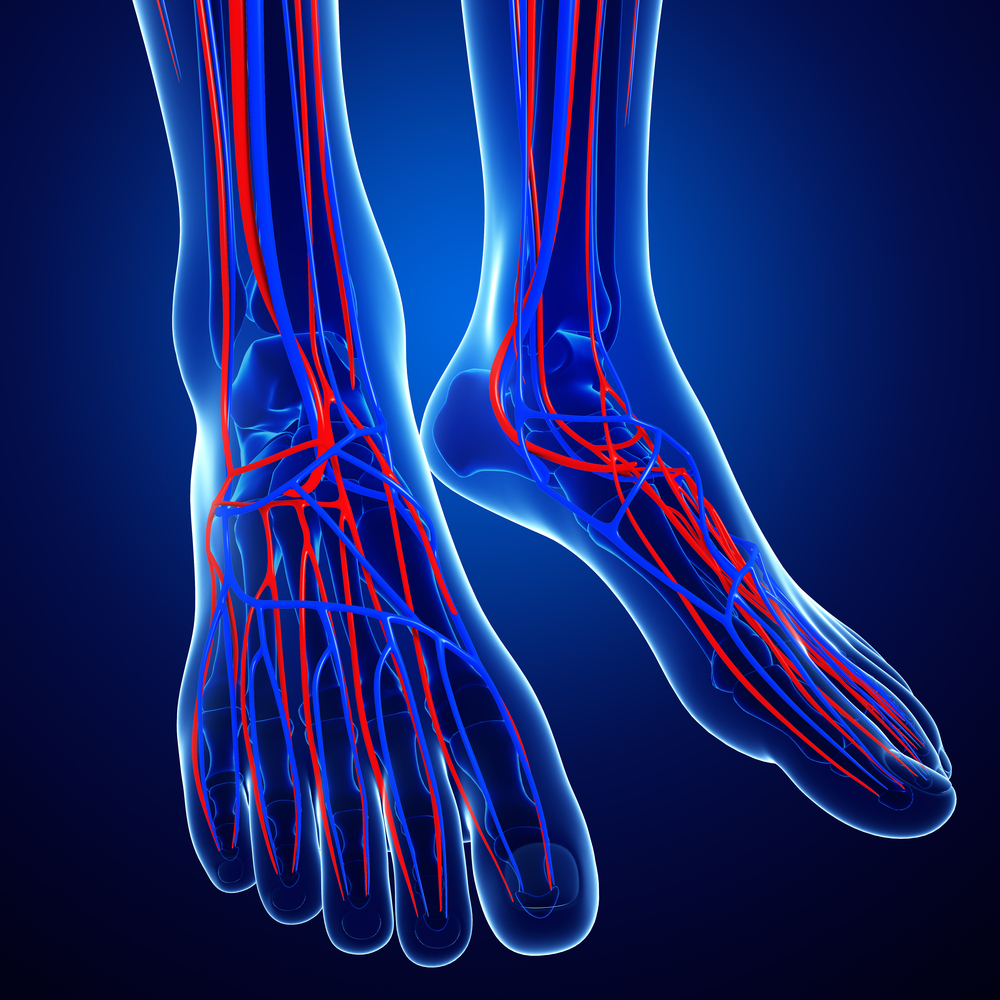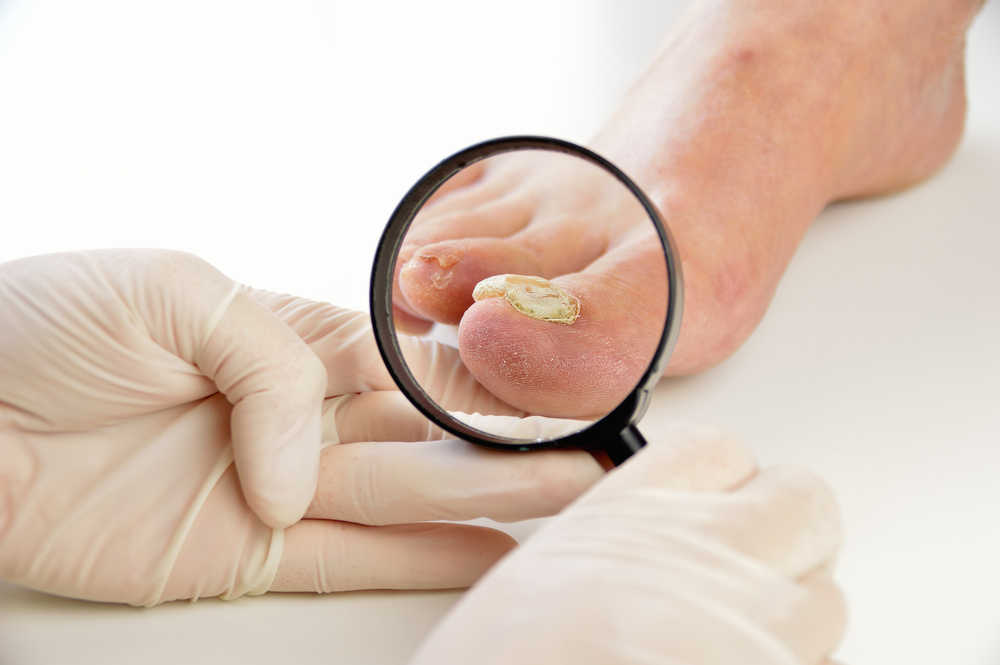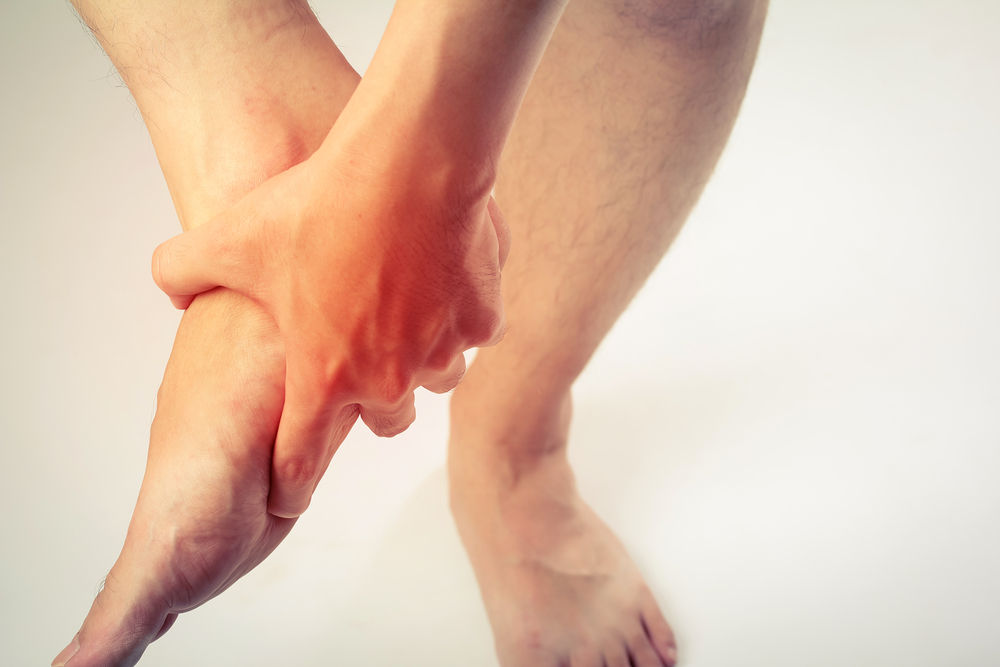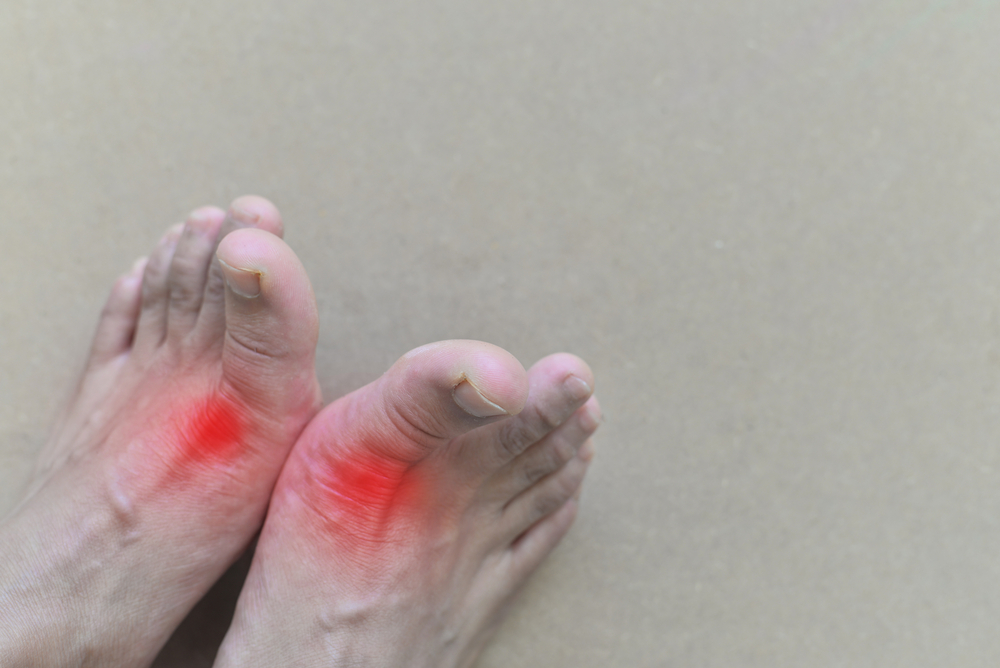Super User
Symptoms of Poor Circulation in the Feet
 Poor circulation refers to impaired in blood flow. This can happen in any part of the body, but is particularly common in the feet. If you have poor foot circulation, you may experience a variety of symptoms. These can include cold feet, numbness, tingling, or a pins and needles sensation, swelling, skin discoloration, pain or aching, a feeling of heaviness in the feet, and increased fatigue. Poor circulation can have many causes. It becomes more common as we age, but can also be brought about by a sedentary lifestyle or obesity. Poor foot circulation is also associated with certain medical conditions, such as diabetes, deep vein thrombosis, atherosclerosis, peripheral artery disease, and venous insufficiency. If you have poor circulation in your feet, a chiropodist can help you manage this condition.
Poor circulation refers to impaired in blood flow. This can happen in any part of the body, but is particularly common in the feet. If you have poor foot circulation, you may experience a variety of symptoms. These can include cold feet, numbness, tingling, or a pins and needles sensation, swelling, skin discoloration, pain or aching, a feeling of heaviness in the feet, and increased fatigue. Poor circulation can have many causes. It becomes more common as we age, but can also be brought about by a sedentary lifestyle or obesity. Poor foot circulation is also associated with certain medical conditions, such as diabetes, deep vein thrombosis, atherosclerosis, peripheral artery disease, and venous insufficiency. If you have poor circulation in your feet, a chiropodist can help you manage this condition.
Poor Circulation
When blood flow to a specific part of the body is reduced, you may experience symptoms of poor circulation. Poor circulation is most common in your extremities, like your legs and feet. Please consult with one of our chiropodists of The Footcare Centre. Our chiropodists will assess your condition and provide you with quality foot and ankle treatment.
Causes
Poor circulation isn’t a condition in itself. Instead, it results from other health issues. Therefore, it’s important to treat the underlying causes:
- Peripheral artery disease (PAD)
- Diabetes
- Blood clots
- Varicose veins
- Obesity
- Raynaud’s disease
Symptoms
Symptoms of poor circulation may include:
- Numbness
- Tingling
- Throbbing or stinging pain in limbs
- Pain
- Muscle Cramps
Diagnosis
A chiropodist will perform a physical exam to detect pain and swelling, as well as an antibodies blood test to detect inflammatory conditions, such as Raynaud’s disease. It’s important to disclose any known family history of poor circulation and any related diseases. A blood sugar test, blood pressure test, ultrasound or CT scan, may also be performed.
Treatment
Treatments for poor circulation depend on what is causing it. Compression socks may be used to reduce pain and swelling. An exercise program may be recommended to improve circulation. Various medications may be prescribed to manage underlying conditions that may contribute to poor circulation.
If you have any questions, please feel free to contact our office located in Niagara Falls, ON. We offer the newest diagnostic and treatment technologies for all your foot care needs.
Causes, Symptoms, and Treatment of Poor Blood Circulation in the Feet
Poor blood circulation in the feet and legs is often caused by peripheral artery disease (PAD), which is usually the result of a buildup of plaque in the arteries. Plaque buildup, or atherosclerosis, can be the result of excess calcium and cholesterol in the bloodstream. This restricts how much blood can flow through arteries. Reduced blood flow to a certain area of the body severely limits the amount of oxygen and nutrients that part of the body receives. This leads to degeneration in the muscles and other tissues. Sometimes, poor blood circulation in the feet and legs can be caused by other conditions, such as the damaging or inflammation of blood vessels, known as vasculitis.
The lack of oxygen and nutrients caused by poor blood circulation can restrict muscle growth and development, as well as cause muscle pain and cramps, weakness, and stiffness. Other common symptoms include numbness in the legs and feet, skin discoloration in the affected limbs, slower nail and hair growth, and erectile dysfunction in men. In more severe cases of PAD, pain can be present even when a person isn't exercising, and may range from mildly uncomfortable to completely debilitating.
Poor blood circulation in the feet and legs is more common in those who are overweight or obese, have diabetes, high blood pressure, high cholesterol, who smoke, or who have a family history of PAD or related conditions such as a heart attack, stroke, etc. Diabetes and smoking place a person at greatest risk for developing poor blood circulation, although advanced age, over 50, can also increase risk.
If you are experiencing poor blood circulation in the feet and legs caused by PAD, it is important to make changes to your lifestyle in order to reduce your risk of experiencing a heart attack or stroke caused by this condition. If you smoke, quit completely. This will increase the amount of oxygen in your bloodstream. Exercising and reducing the saturated fats in your diet. Saturated fats come from fatty meats, fried foods, whole milk, etc., can make a difference in improving blood circulation in feet. It is also important to avoid developing influenza and to carefully control your blood sugar if you have diabetes.
Tips to Find the Right Shoe for You
 Going shoe shopping can be difficult. There are many factors to consider when purchasing a new pair of shoes. One of the most important factors is the correct size shoe. A quality made and comfortable shoe should fit your foot properly. Having the right fit can also relieve and prevent certain foot conditions. To find the right size shoe, it is helpful to shop at a brick and mortar shoe store. Here, a salesperson can measure your foot and ensure you try on the correct size shoes. It is recommended to go shoe shopping towards the end of the day, when the feet tend to be at their largest due to natural swelling. Buying shoes that fit your feet when they are at their largest, will ensure that they fit comfortably throughout the day. It is also suggested that you wear the socks you intend to wear with the shoes. When you try on the shoes, walk around the store and make sure they feel comfortable. For more tips on how to find the right shoes for you, consult with a chiropodist today.
Going shoe shopping can be difficult. There are many factors to consider when purchasing a new pair of shoes. One of the most important factors is the correct size shoe. A quality made and comfortable shoe should fit your foot properly. Having the right fit can also relieve and prevent certain foot conditions. To find the right size shoe, it is helpful to shop at a brick and mortar shoe store. Here, a salesperson can measure your foot and ensure you try on the correct size shoes. It is recommended to go shoe shopping towards the end of the day, when the feet tend to be at their largest due to natural swelling. Buying shoes that fit your feet when they are at their largest, will ensure that they fit comfortably throughout the day. It is also suggested that you wear the socks you intend to wear with the shoes. When you try on the shoes, walk around the store and make sure they feel comfortable. For more tips on how to find the right shoes for you, consult with a chiropodist today.
Finding the right shoes for you can ensure your comfort and help maintain proper foot health. If you suffer from foot pain and need help finding the right shoes for you, please consult with one of our chiropodists of The Footcare Centre. Our chiropodists will assess your condition and provide you with quality foot and ankle treatment.
Tips to Find Great Shoes
Finding shoes that are well-fitting, supportive, and comfortable can be key in maintaining your overall foot health, but can sometimes seem like a monumental task.
Here are some tips and tricks to keep in mind when shopping for shoes.
- Shop in a brick and mortar store - Your shoe size can change throughout your lifetime. You will be able to try on shoes before you buy them to ensure a proper fit. A salesperson can also provide recommendations on what shoes best serve your specific needs.
- Try shoes on at the end of the day - Your feet swell throughout the day. By trying shoes on in the evening when the feet are at their largest, you ensure a good fit and shoes that are comfortable all day.
- Have your feet measured - Find the right fit by having your feet measured at the shoe store. A salesperson can help by measuring both feet with a brannock device to determine your true size.
- Opt for comfort and support - Some shoes, such as high heels and flip flops, may look great but can cause damage to the feet over time. Look for shoes that have a low heel, adequate arch support, a wide toe box, and are made of breathable materials.
If you have any questions, please feel free to contact our office located in Niagara Falls, ON. We offer the newest diagnostic and treatment technologies for all your foot care needs.
Tips on Finding the Perfect Shoe For You
Wearing the right shoes is important for more reasons than your appearance - it can also benefit the health of your feet. Ill-fitting, unsupportive, and uncomfortable shoes can cause or contribute to many foot problems, including bunions, corns, calluses, and hammertoes. Comfortable, supportive, and properly fitted shoes, on the other hand, can prevent and relieve foot pain.
When shopping for shoes, there are several things to keep in mind. It is best to try on shoes prior to purchasing them. Throughout the day, your feet swell, and are at their largest in the late afternoon or early evening. It is best to try on shoes at this time to ensure that they will fit your feet throughout the day. Having both feet measured in a shoe store can also help ensure that you get the right size. Your feet grow and change throughout your lifetime, even in adulthood, so your shoe size can change. When you are trying on shoes, be sure to walk around the store in them to see how they fit. If you wear orthotic inserts, bring them with you when you go shopping so you can try them out in the various shoes you try on.
But what kinds of shoes should you look for? It’s best to avoid shoes that have excessively high heels and narrow or pointed toes, which can increase the pressure on your toe joints and cause foot deformities. A wide toe area that allows you to wiggle your toes will likely be more comfortable. Shoes with a soft but rigid back will prevent your heel from slipping while you walk. You should also look for shoes with adequate cushioning that are made with breathable materials.
For more information about how to find the right shoes for you, please consult with a chiropodist.
How Is Toenail Fungus Treated?
 A fungal infection of the toenails is also known as onychomycosis. This condition causes the nails to become distorted, thickened, brittle, or crumbly, and discolored. The nail may lift from the nail bed and it can emit an odor. Fungal infections typically affect toenails more than fingernails due to the toes being confined to shoes, where they’re in a warm, moist environment where fungi thrive. The fungal infection can affect part of the nail, the entire nail, or several nails. Toenail fungus is often treated through oral antifungal medications. You may also be prescribed topical medications, such as antifungal nail polishes, which are brushed directly onto the affected nails. If you have developed a toenail fungus, it is recommended that you see a chiropodist for proper treatment.
A fungal infection of the toenails is also known as onychomycosis. This condition causes the nails to become distorted, thickened, brittle, or crumbly, and discolored. The nail may lift from the nail bed and it can emit an odor. Fungal infections typically affect toenails more than fingernails due to the toes being confined to shoes, where they’re in a warm, moist environment where fungi thrive. The fungal infection can affect part of the nail, the entire nail, or several nails. Toenail fungus is often treated through oral antifungal medications. You may also be prescribed topical medications, such as antifungal nail polishes, which are brushed directly onto the affected nails. If you have developed a toenail fungus, it is recommended that you see a chiropodist for proper treatment.
Toenail fungus can be uncomfortable and unsightly. If you have diabetes or a compromised immune system, it may also be dangerous. To learn more about treatment options, please consult with one of our chiropodists of The Footcare Centre. Our chiropodists will assess your condition and provide you with quality foot and ankle treatment.
What Does Toenail Fungus Look Like?
A fungal infection of the toenail may cause the affected nail to become thickened, brittle, crumbly, and yellowish or brown in color. Sometimes the toenail may separate from the nail bed, become deformed, emit a foul odor, or cause pain or discomfort.
What Causes Toenail Fungus?
Toenail fungus is caused by a fungus that infects the nail bed. The fungus lives and thrives in warm and moist environments and is also contagious. Athlete’s foot, which is a fungal infection of the skin, may spread to the nails and cause toenail fungus.
What Treatments Are Available?
Potential treatments for toenail fungus may include oral antifungal medications, topical antifungal medications, such as medicated nail polishes that are applied directly to the affected nail, and laser therapy. Sometimes, a combination of treatments are prescribed.
If you have any questions, please feel free to contact our office located in Niagara Falls, ON. We offer the newest diagnostic and treatment technologies for all your foot care needs.
Treating Toenail Fungus
A fungal toenail infection, also known as onychomycosis, can be unsightly and uncomfortable. Infected nails often become thickened, brittle, crumbly, and discolored with white, yellow, or brown patches. The affected nails may also lift from the nail bed and emit a foul odor.
Fungal toenail infections are contagious and are caused by a fungus getting in, on, or under the toenails. Fungi thrive in moist, warm environments like public swimming pools, locker rooms, and showers, and many people contract fungal nail infections from walking barefoot in these environments. The fungus can also spread from person to person. For this reason, it is best to avoid sharing personal items like shoes, socks, and towels with an infected individual.
Certain factors can make one more likely to contract toenail fungus. People who have diabetes, poor circulation, or weakened immune system, are over the age of 65, wear artificial nails, have a toenail injury or damaged skin around their toenails, wear closed-toe shoes, and expose their feet to moisture for extended periods of time are at an increased risk of onychomycosis.
Treatment options for toenail fungus include oral medications and topical solutions such as medicated nail polishes and creams. Treatment can take several months to be effective, so it is recommended that you see a chiropodist as soon as you notice the symptoms of toenail fungus. For more information about this condition, please consult with a podiatrist.
What Is Plantar Fasciitis?
 Plantar fasciitis is a foot condition in which the plantar fascia, a ligament that stretches along the bottom of the foot and connects the heel bone to the toes, becomes inflamed. It is often caused by overuse or repeated impact on the heel, which occurs when we walk, run, or stand. The most common symptom of plantar fasciitis is a sharp pain near the heel that is typically at its worst first thing in the morning or after exercising. Plantar fasciitis can be treated through activity modifications, wearing orthotics, and regularly stretching the feet. For more information about plantar fasciitis, consult with a chiropodist today.
Plantar fasciitis is a foot condition in which the plantar fascia, a ligament that stretches along the bottom of the foot and connects the heel bone to the toes, becomes inflamed. It is often caused by overuse or repeated impact on the heel, which occurs when we walk, run, or stand. The most common symptom of plantar fasciitis is a sharp pain near the heel that is typically at its worst first thing in the morning or after exercising. Plantar fasciitis can be treated through activity modifications, wearing orthotics, and regularly stretching the feet. For more information about plantar fasciitis, consult with a chiropodist today.
Plantar fasciitis can be painful and interfere with your daily activities. If you are experiencing foot or heel pain and believe you may be afflicted with plantar fasciitis, please consult with one of our chiropodists of The Footcare Centre. Our chiropodists will assess your condition and provide you with quality foot and ankle treatment.
What Is Plantar Fasciitis?
Plantar fasciitis refers to the inflammation of the plantar fascia, a ligament that runs along the bottom of the foot and connects the heel bone to the toes. Repetitive activities, such as running or jumping, can injure the plantar fascia over time. Plantar fasciitis can also be caused by flat feet, high arches, pregnancy, and activities that put excessive pressure on your feet, like standing all day for work. When the plantar fascia becomes inflamed, it causes pain and discomfort.
Symptoms
Typical symptoms of plantar fasciitis include:
- Stabbing pain near the heel
- Pain that is worst in the morning or after a period of rest
- Pain that increases after exercising
- Swelling
- Tightness in the Achilles tendon
Diagnosis
Plantar fasciitis is typically diagnosed via medical history and physical examination.
Treatment
Treatments for plantar fasciitis include resting and icing the affected foot, stretching the foot, taking medications to reduce inflammation, and wearing orthotics. In severe cases where pain does not improve with conservative treatments, injections or surgery may be recommended.
If you have any questions, please feel free to contact our office located in Niagara Falls, ON. We offer the newest diagnostic and treatment technologies for all your foot care needs.
Plantar Fasciitis
The plantar fascia is a thick ligament that runs along the bottom of your foot and connects the heel bone to the toes. When the plantar fascia becomes inflamed, typically due to overuse, it can cause a condition called plantar fasciitis. Plantar fasciitis is characterized by a sharp, stabbing heel pain, arch pain, and pain that is at its worst when taking your first steps after a long resting period, such as when you first wake up in the morning. You may also notice swelling on the bottom of the heel.
Plantar fasciitis is one of the most common foot ailments, and one of the most common causes of heel pain. Besides overuse from activities such as running or jumping, wearing shoes that do not have adequate cushioning and support, standing for prolonged periods of time, being obese, or having flat feet can all increase your risk of developing plantar fasciitis.
Fortunately, there are many treatments for this condition. Your chiropodist may recommend stretching exercises, activity and footwear changes, and icing the affected foot to help relieve pain. If pain persists after several weeks, your chiropodist may prescribe custom orthotics, pad, tape, strap, or immobilize the affected foot, or inject a corticosteroid into the area to reduce pain.
For more information about plantar fasciitis, please consult with a chiropodist.
What Is Gout?
 Gout is caused by a buildup of uric acid in the bloodstream. The uric acid can crystallize and build up in the joints of the foot, especially in the big toe, leading to gout. Sudden and intense pain, known as gout attacks, can make it feel as if the foot is on fire. Other symptoms may include swelling, stiffness, and warmth in the affected joint. It is said that gout is more likely to occur in older men and women, people who consume alcohol, and people who take certain medications, like diuretics and cyclosporine. Gout is also hereditary, and may arise in people with conditions like kidney disease, thyroid disease, diabetes, or sleep apnea. If you ignore the symptoms and don't seek treatment, it can lead to arthritis. This condition could leave the joint permanently damaged or swollen. For more information about gout and to discuss potential treatment options, consult with a chiropodist today.
Gout is caused by a buildup of uric acid in the bloodstream. The uric acid can crystallize and build up in the joints of the foot, especially in the big toe, leading to gout. Sudden and intense pain, known as gout attacks, can make it feel as if the foot is on fire. Other symptoms may include swelling, stiffness, and warmth in the affected joint. It is said that gout is more likely to occur in older men and women, people who consume alcohol, and people who take certain medications, like diuretics and cyclosporine. Gout is also hereditary, and may arise in people with conditions like kidney disease, thyroid disease, diabetes, or sleep apnea. If you ignore the symptoms and don't seek treatment, it can lead to arthritis. This condition could leave the joint permanently damaged or swollen. For more information about gout and to discuss potential treatment options, consult with a chiropodist today.
Gout is a painful form of arthritis that can affect anyone. Please consult with one of our chiropodists of The Footcare Centre. Our chiropodists will assess your condition and provide you with quality foot and ankle treatment.
What Is Gout?
Gout is characterized by sudden, severe attacks of pain, redness, and tenderness in the joints. This type of arthritis is caused by a buildup of uric acid in the bloodstream. When uric acid crystallizes in a joint, often the joint of the big toe, it can bring about a gout attack.
Symptoms
Symptoms of gout include:
- Sudden and severe pain
- Swelling
- Redness
- Warmth
- Joint stiffness
- Joint deformity
Diagnosis
A chiropodist will ask questions about your personal and family medical history, followed by an examination of the affected joint. Laboratory tests and x-rays are sometimes ordered to determine if the inflammation is caused by something other than gout. A sample of fluid taken from your joint can show whether it contains uric acid.
Treatment
Prescription medications or injections are used to treat the pain, swelling, and inflammation. Patients with chronic gout can also use behavioral modification such as diet, exercise, and decreased intake of alcohol to help minimize the frequency of gout attacks. Foods and beverages that are high in purines should be avoided since purines are converted in the body to uric acid. If left untreated, this painful condition can leave your joint permanently damaged and swollen.
If you have any questions, please feel free to contact our office located in Niagara Falls, ON. We offer the newest diagnostic and treatment technologies for all your foot care needs.

